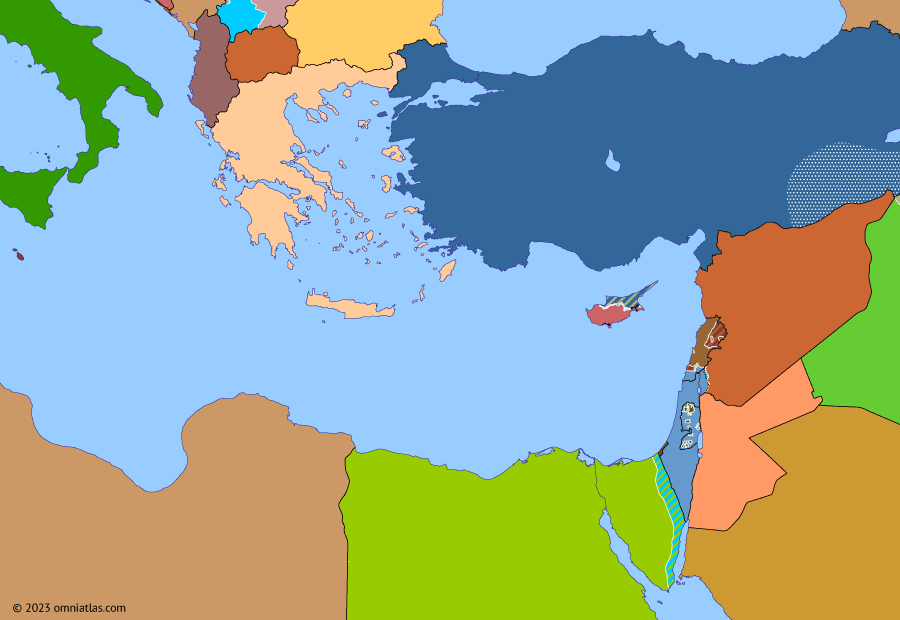Eastern Mediterranean 2006: 2006 Lebanon War

2006 Lebanon War
22 Jul 1974 Turkish invasion of Cyprus
15 Nov 1976 Lebanese Civil War
19 Mar 1978 Operation Litani
25 May 1979 Israeli withdrawal from Sinai
22 Dec 1980 Battle of Zahlé
18 Aug 1982 1982 Lebanon War
5 Feb 1984 Multinational Force in Lebanon
19 May 1986 War of the Camps
15 Nov 1988 First Intifada
17 Sep 1991 Collapse of the Eastern Bloc
18 May 1994 Palestinian National Authority
14 Mar 1997 Anarchy in Albania
20 Mar 2001 Second Intifada
22 Jul 2006 2006 Lebanon War
14 Jun 2007 Hamas’s takeover of Gaza
16 Jan 2009 Operation Cast Lead
In May 2000 Israel withdrew from southern Lebanon and five years later Syria withdrew from the rest of the country. As the foreign occupiers departed, the Shia militant organization Hezbollah emerged as a powerful military force in Lebanon, beginning strikes into northern Israel as early as October 2000. After Hezbollah mounted cross-border raids and rocket attacks in 2006, Israel invaded southern Lebanon, launching airstrikes on targets as far as Beirut. The war ended with a UN ceasefire in August, after which the Lebanese Army and an enlarged UN presence replaced Israeli and Hezbollah forces in southern Lebanon.
This map has in-depth notes in the Journal, exclusive to Patrons on Classical Tier and above. Find them in the events descriptions, marked with the Journal icon .